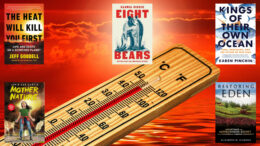This summer’s soaring temperatures and searing wildfires have made it too hot and too dangerous to spend much time outdoors. But that shouldn’t stop us from preparing for a better future for the planet. Here are five powerful new books covering the most pressing environmental issues of the day — climate change and the extinction crisis — and the people trying to create the solutions we need.
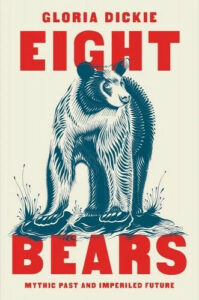 Eight Bears: Mythic Past and Imperiled Future
Eight Bears: Mythic Past and Imperiled Future
by Gloria Dickie
This masterful look at the world’s eight remaining bear species (note that key emphasis) gets our vote as the best conservation book of the year to date. It’s a powerful, inspiring and somewhat worrying examination of our ursine neighbors and, through them, ourselves.
From the publisher: “…Gloria Dickie embarks on a globe-trotting journey to explore each bear’s story, whisking readers from the cloud forests of the Andes to the ice floes of the Arctic; from the jungles of India to the backwoods of the Rocky Mountain West. She meets with key figures on the frontlines of modern conservation efforts — the head of a rescue center for sun and moon bears freed from bile farms, a biologist known as Papa Panda, who has led China’s panda-breeding efforts for almost four decades, a conservationist retraining a military radar system to detect and track polar bears near towns — to reveal the unparalleled challenges bears face as they contend with a rapidly changing climate and encroaching human populations.”
Two bonuses from the archives: Dickie wrote about grizzly bears for The Revelator back in 2018. And for more on bear extinction, read an excerpt from Mike Stark’s Chasing the Ghost Bear: On the Trail of America’s Lost Super Beast.
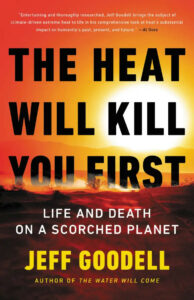 The Heat Will Kill You First: Life and Death on a Scorched Planet
The Heat Will Kill You First: Life and Death on a Scorched Planet
by Jeff Goodell
My first impulse is to call this an angry book, but that’s not quite right. It’s a motivated book, one that aims to push for positive change before it’s too late. The fact that this feels “ripped from the headlines” right now makes it all the more important in this painful summer, which embodies the new abnormal that’s been thrust upon us.
From the publisher: “Heat is the first order threat that drives all other impacts of the climate crisis. And as the temperature rises, it is revealing fault lines in our governments, our politics, our economy, and our values. The basic science is not complicated: Stop burning fossil fuels tomorrow, and the global temperature will stop rising tomorrow. Stop burning fossil fuels in 50 years, and the temperature will keep rising for 50 years, making parts of our planet virtually uninhabitable. It’s up to us. The hotter it gets, the deeper and wider our fault lines will open.”
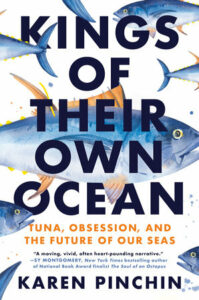 Kings of Their Own Ocean: Tuna, Obsession, and the Future of Our Seas
Kings of Their Own Ocean: Tuna, Obsession, and the Future of Our Seas
by Karen Pinchin
I’ve written about endangered tuna several times over the years, but reading this book gave me a chance to think about what it means to be a tuna — and how hard it is to protect them. This decades-spanning tale of environmental justice presents the human side of tuna, as well as a look below the surface of the ocean at species very few of us truly understand but more of us should treasure.
From the publisher: “In 2004, an enigmatic charter captain named Al Anderson caught and marked one Atlantic bluefin tuna off New England’s coast with a plastic fish tag. Fourteen years later that fish — dubbed Amelia for her ocean-spanning journeys — died in a Mediterranean fish trap, sparking Karen Pinchin’s riveting investigation into the marvels, struggles, and prehistoric legacy of this remarkable species. Over his fishing career Al marked more than sixty thousand fish with plastic tags, an obsession that made him nearly as many enemies as it did friends. His quest landed him in the crossfire of an ongoing fight between a booming bluefin tuna industry and desperate conservation efforts, a conflict that is once again heating up as overfishing and climate change threaten the fish’s fate.”
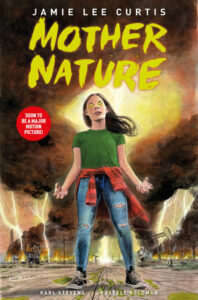 Mother Nature
Mother Nature
By Jamie Lee Curtis and Russell Goldman, Illustrated by Karl Stevens
Curtis, the Academy Award-winning actor, shifts from scream queen to eco-horror with this graphic novel, adapting a to-be-produced Blumhouse screenplay. The villain this time isn’t a faceless, unstoppable serial killer; it’s a heartless, PR-savvy fossil-fuel executive who happens to wear Curtis’s face (she’ll obviously play the role in the eventual film). The story starts with an act of over-the-top bloodshed but soon settles into more nuanced terrors of pollution and betrayal, while presenting us with realistic and welcome Diné and LGBTQ characters — not all of whom make it out of the book alive.
One last note: Curtis may be the marquee name here, but the breakout star is Stevens’ exquisite watercolor artwork.
From the publisher: “After witnessing her engineer father die in mysterious circumstances on one of the Cobalt Corporation’s experimental oil extraction projects, Nova Terrell has grown up to hate the seemingly benevolent company that the town of Catch Creek, New Mexico, relies on for its livelihood and, thanks to the ‘Mother Nature’ project, its clean water. Haunted by her father’s death, the rebellious Nova wages a campaign of sabotage and vandalism on the oil giant’s facilities and equipment, until one night she accidentally makes a terrifying discovery about the true nature of the ‘Mother Nature’ project and the malevolent, long-dormant horror it has awakened, and that threatens to destroy them all.”
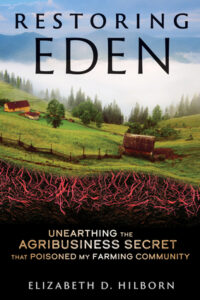 Restoring Eden: Unearthing the Agribusiness Secret That Poisoned My Farming Community
Restoring Eden: Unearthing the Agribusiness Secret That Poisoned My Farming Community
By Elizabeth D. Hilborn
Another horror story — except it’s all true. Equal parts memoir and detective story, this stunning book recounts an EPA scientist’s quest to uncover and understand what’s unravelling her family’s North Carolina farm. Her journey reminds us that unseen evil exists in the world, and that we can fight it.
From the publisher: “The chemicals found in her water samples showed beyond any doubt that not only her farm, but her greater farming community, was at risk from toxic chemicals that travelled with rainwater over the land, into water, and deep within the soil. Hilborn was given a front row seat to the insect apocalypse. Even as a scientist, she’d been unaware of the risks to life from some common agricultural chemicals. Her goal was to protect her farm and the animals who lived there. But first she had to convince her rural neighbors of the risk to their way of life, too.”
That’s it for this month, but you can find hundreds of additional book recommendations in the “Revelator Reads” archives.
![]()

